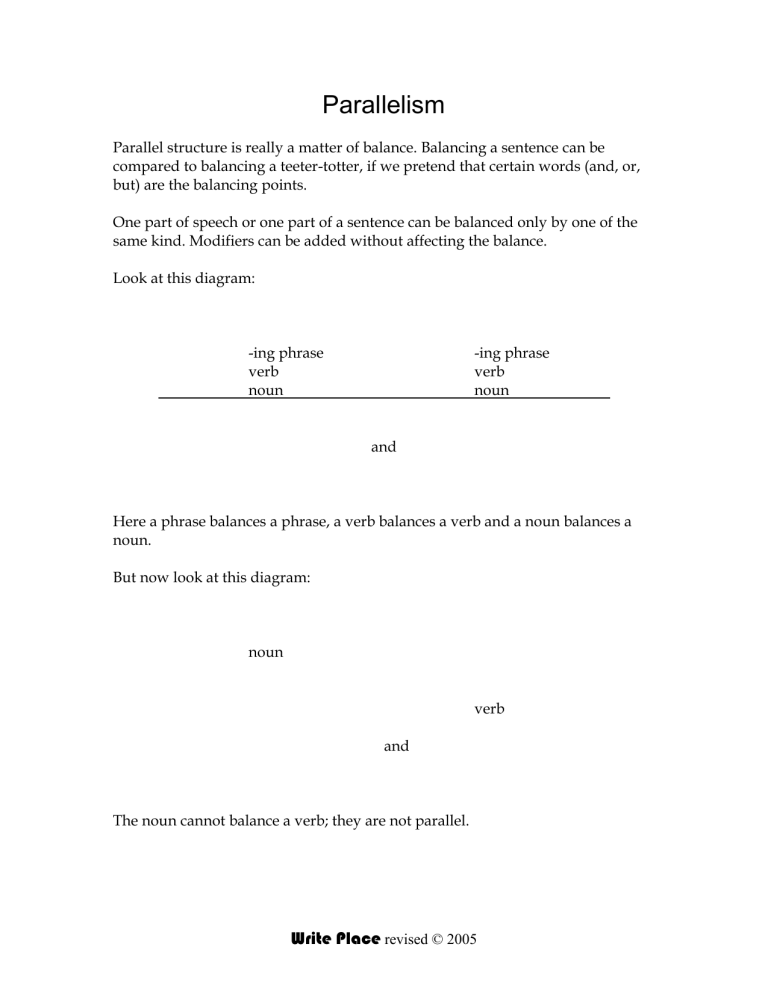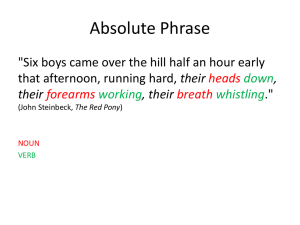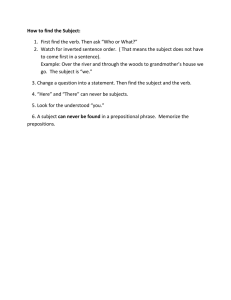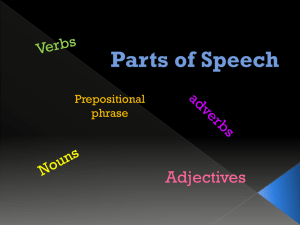Parallelism

Parallelism
Parallel structure is really a matter of balance. Balancing a sentence can be compared to balancing a teeter-totter, if we pretend that certain words (and, or, but) are the balancing points.
One part of speech or one part of a sentence can be balanced only by one of the same kind. Modifiers can be added without affecting the balance.
Look at this diagram:
-ing phrase verb noun
-ing phrase verb noun
Here a phrase balances a phrase, a verb balances a verb and a noun balances a noun.
But now look at this diagram: noun and and verb
The noun cannot balance a verb; they are not parallel.
Write Place
revised © 2005
Modifiers can be added without affecting the balance.
Here is an unbalanced sentence:
Boy Scouts learn cooking, canoeing, swimming, and how to make a rope.
The last phrase is too heavy; it cannot balance the other –ing words. If we change the phrase to rope-making, it is balanced.
A slightly different parallelism involves the common connectors either-or,
neither-nor, not only-but also. Here, the kind of word or part of a sentence that follows the first connector must be the same as that following the second. For example:
I am going either to Minneapolis or to Duluth.
Here the two prepositional phrases are parallel; they have the same kind of structure. Now look at this example:
The hurricane not only destroyed the fishing fleet but also the homes of
the fishermen.
The verb destroyed cannot balance the noun homes. The sentence should be rewritten so that the nouns follow both connectors:
The hurricane destroyed not only the fishing fleet, but also the homes of the fishermen.
Write Place
revised © 2005
Write Place
revised © 2005








